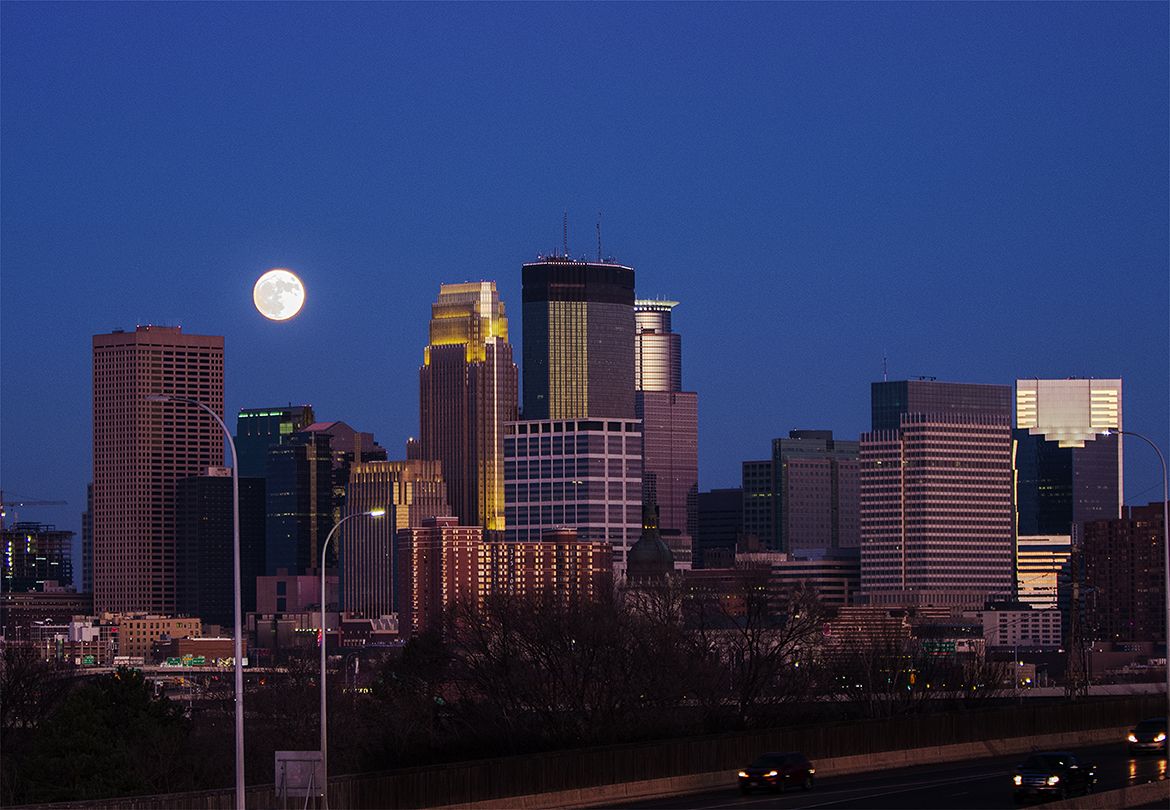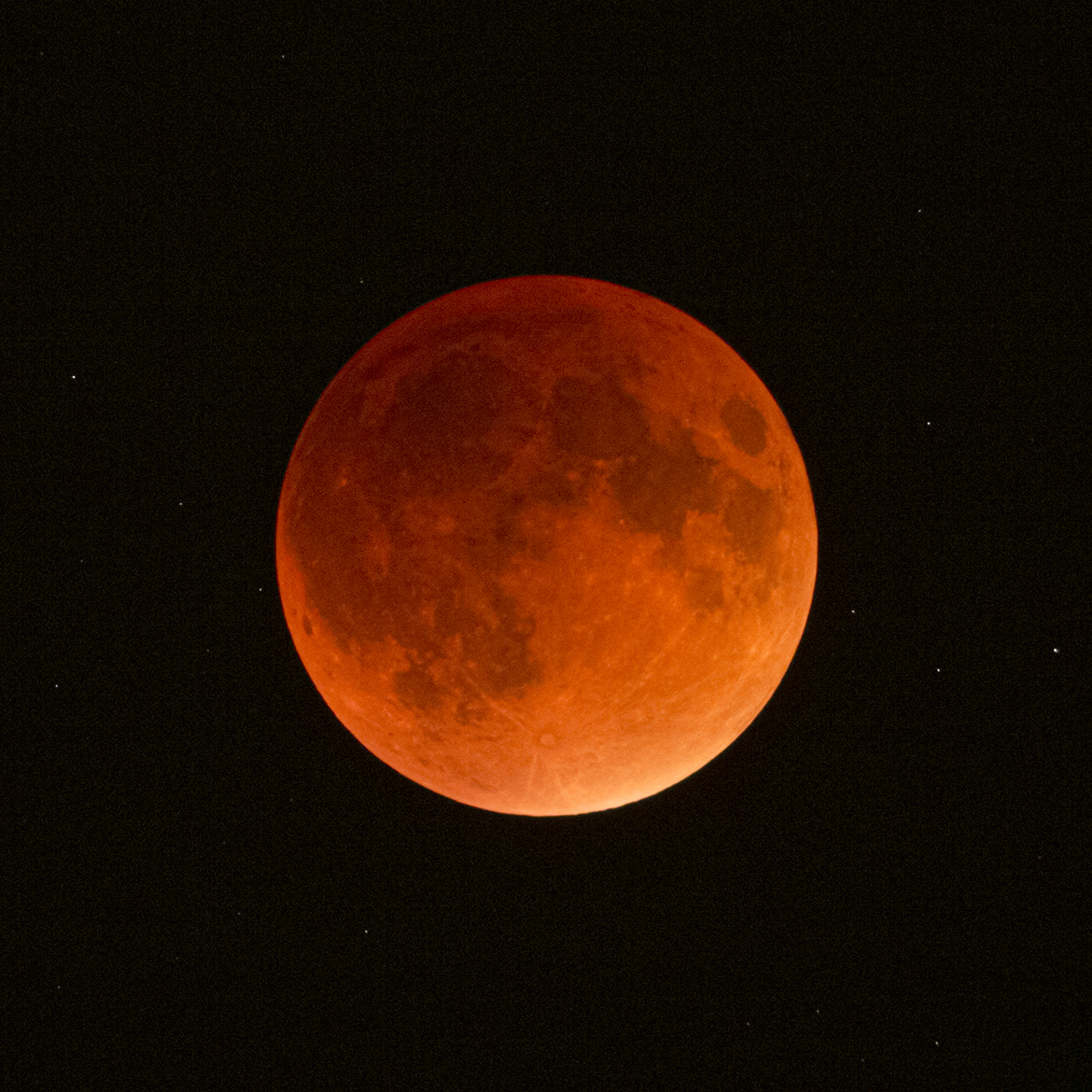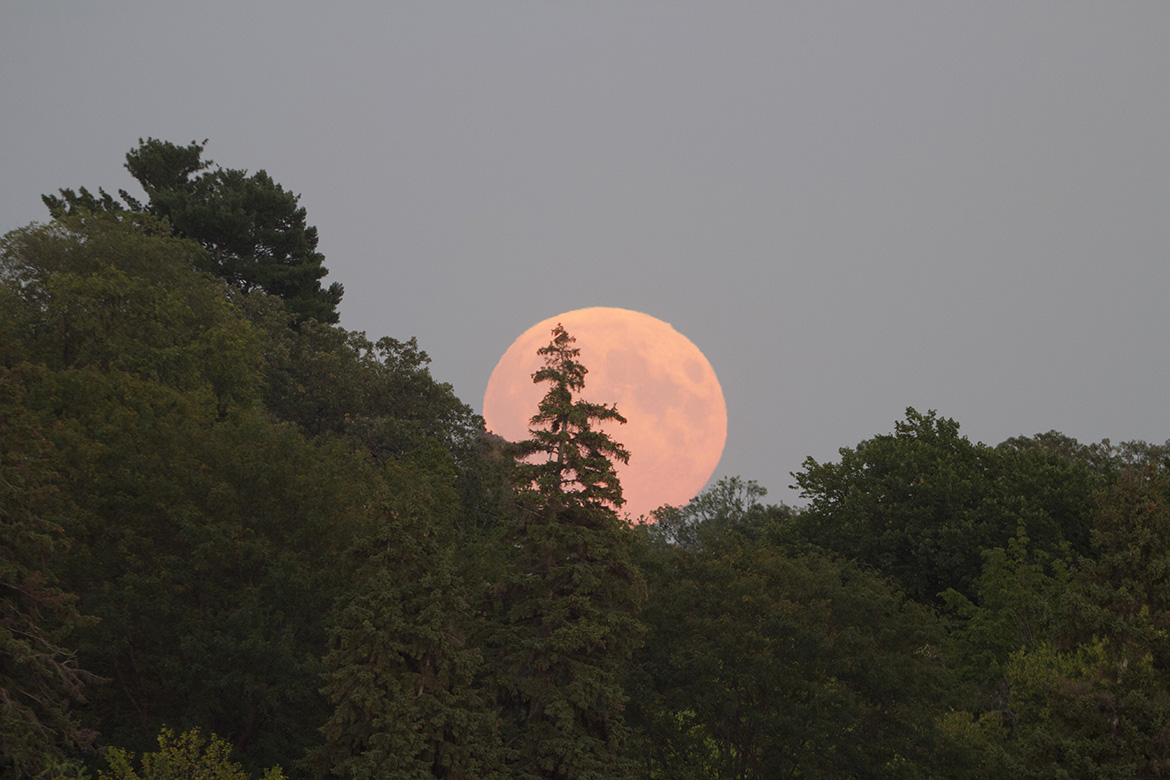
The moon rises over the cityscape of Minneapolis as its buildings start to turn on their own lighting.. This is the “supermoon”, a designation for when the moon is unusually close to Earth and hence, appears even larger than expected.
Minneapolis MN
2 December 2017
Canon EOS 60Da, EF 70-200mm f/2.8 @ 70mm
1/60, f/2.8, ISO 400
previous | nightscapes index | next


